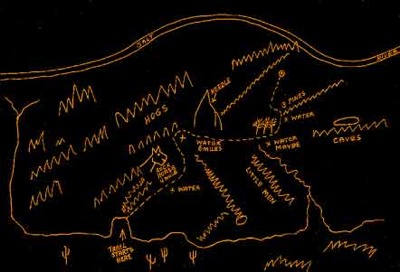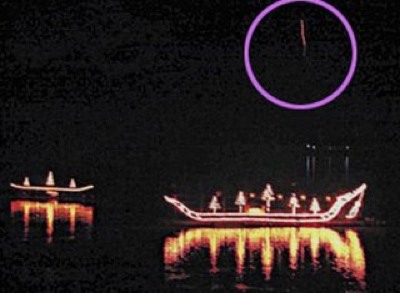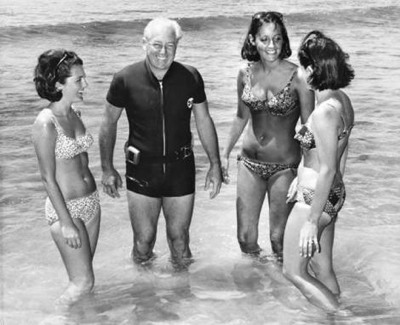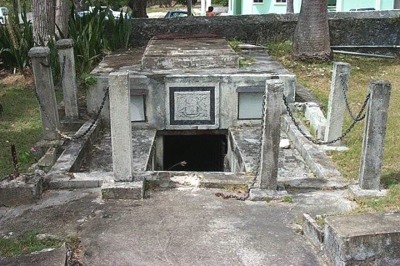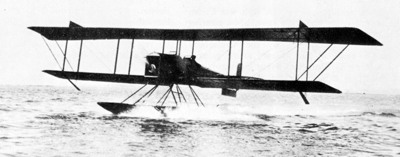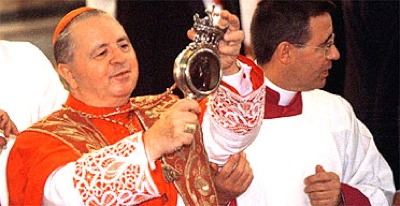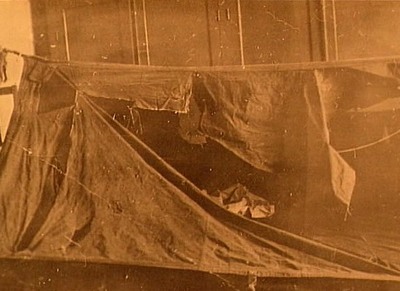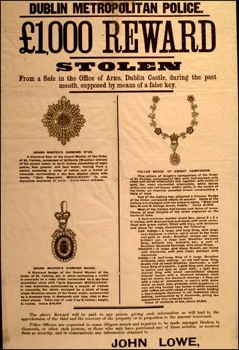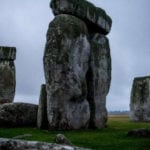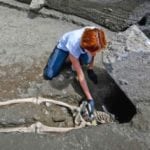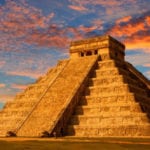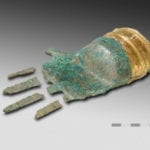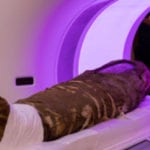 Humans
Humans  Humans
Humans  Movies and TV
Movies and TV 10 Holiday Movies Released at Odd Times of the Year
 Politics
Politics 10 Countries Where Religion and Politics Are Inseparable
 Weird Stuff
Weird Stuff 10 Freaky Times When Famous Body Parts Were Stolen
 Miscellaneous
Miscellaneous 10 Interesting Things Manufacturers Stopped Making and Why
 Gaming
Gaming 10 Funny Tutorials in Games
 History
History 10 Fascinating Little-Known Events in Mexican History
 Facts
Facts 10 Things You May Not Know about the Statue of Liberty
 Movies and TV
Movies and TV 10 Movie Adaptions That Brought Popular Songs to Life
 Health
Health 10 Miraculous Advances Toward Curing Incurable Diseases
 Humans
Humans 10 One-of-a-kind People the World Said Goodbye to in July 2024
 Movies and TV
Movies and TV 10 Holiday Movies Released at Odd Times of the Year
 Politics
Politics 10 Countries Where Religion and Politics Are Inseparable
Who's Behind Listverse?

Jamie Frater
Head Editor
Jamie founded Listverse due to an insatiable desire to share fascinating, obscure, and bizarre facts. He has been a guest speaker on numerous national radio and television stations and is a five time published author.
More About Us Weird Stuff
Weird Stuff 10 Freaky Times When Famous Body Parts Were Stolen
 Miscellaneous
Miscellaneous 10 Interesting Things Manufacturers Stopped Making and Why
 Gaming
Gaming 10 Funny Tutorials in Games
 History
History 10 Fascinating Little-Known Events in Mexican History
 Facts
Facts 10 Things You May Not Know about the Statue of Liberty
 Movies and TV
Movies and TV 10 Movie Adaptions That Brought Popular Songs to Life
 Health
Health 10 Miraculous Advances Toward Curing Incurable Diseases
Another 10 Mysteries That Defy Explanation
Here at the List Universe, we love mysteries. So much so, that we have produced six lists so far. So, in keeping with time-honored tradition, we are now presenting our next ten mysteries – taking our total to seventy! It is fortunate that the world is so full of mysterious events and things that we can keep you entertained with lists of this nature. If you wish to read the others, they are here:
Top 10 Unsolved Mysteries
Another 10 Unsolved Mysteries
Yet Another 10 Unsolved Mysteries
10 More Unsolved Mysteries
10 More Unsolved Mysteries of the World, and
10 More Mysteries of the Unexplained.
Mokele-mbembe is a cryptid supposed to live in the Congo River Basin. It is widely documented in local folklore as having an elephant-like body with a long neck and tail and a small head. This description fits with the description of a small Sauropod. This gives the legend some credence with cryptozoologists who continue to this day to search for the Mokele-mbembe in the hopes it is a relic dinosaur. So far though only claimed sightings, grainy long distance video and a few photographs form the evidence for the existence of the Mokele-mbembe.
Perhaps among the most compelling of the evidence is the reported killing of a Mokele-mbembe. Reverend Eugene Thomas from Ohio, USA, told James Powell and Dr. Roy P. Mackal in 1979 a story that involved the purported killing of a Mokele-mbembe near Lake Tele in 1959. Thomas was a missionary who had served in the Congo since 1955, gathering much of the earliest evidence and reports, and claiming to have had two close-encounters himself. Natives of the Bangombe tribe who lived near Lake Tele were said to have constructed a large spiked fence in a tributary of Tele to keep Mokele-mbembe from interfering in their fishing. A Mokele-mbembe managed to break through, though it was wounded on the spikes, and the natives then killed the creature. As William Gibbons writes, “Pastor Thomas also mentioned that the two pygmies mimicked the cry of the animal as it was being attacked and speared… Later, a victory feast was held, during which parts of the animal were cooked and eaten. However, those who participated in the feast eventually died, either from food poisoning or from natural causes.”
Somewhere in the Superstition Mountains of Arizona, located east of Phoenix, Arizona there is reputed to be a gold mine so rich that if the walls are tapped with a hammer, nuggets of gold come tumbling down. The mine was supposedly discovered by the Apache who kept it a closely guarded secret until finally revealing it to select few of the first Spanish monks who reached Arizona from the colonies in Mexico. It is known locally as ‘The Dutchmen’s Mine’ because two of the many 19th century claimants were thought to be from Holland. Jacob Waltz and Jacob Weiser were two German explorers who rescued a Don Miguel Peralta from a brawl in the Mexican town of Arizpe. Don Miguel told his rescuers about a secret family mine that one of his relatives had staked the claim for in 1748. The party of three left for Arizona with the Peralta family map and found the Peralta family mine shortly thereafter. The three men picked up $60,000 worth of gold. Don Miguel sold the map and the title to the mine to the Germans for their half of the proceeds. The two Germans continued to work the mine over the next 2 decades, but then disaster finally struck. Waltz came back to the camp one evening after camping near the mine to find Weiser had disappeared, on the ground was a blood-stained shirt and Apache arrows.
In 1880 the mine was again discovered, by chance. The discoverers were two young US soldiers who appeared in the town of Pinal with their saddlebags full of gold. They said that the ore came from a funnel-shaped mine in a canyon near a sharp pinnacle of rock. When they did not return from a second venture to the mine, a search party was dispatched. They found the bodies of the two soldiers who were both shot dead. Over time much of the stories surrounding the mine have succumbed to legend and embellishment now that there exists many variations on the tales. Currently the area is a State park, Lost Dutchman State Park. Mining is prohibited, but that doesn’t stop the 8000 people every year who come to search for the lost gold.
The Naga fireballs of the Mekong river are not a question of ‘If’, but a question of ‘What’. They are one of the most well documented unexplained phenomena in the entire world. Every year during October on the night of Wan Awk Pansa thousands of spectators gather on the banks of the Mekong river in Thailand and Laos to see the legendary Naga breathe forth balls of fire from the river itself. Many have been watching this every year for their entire life. The balls themselves are reddish in color and are about the size of an egg. They slowly and silently rise from the river before accelerating high into the air where they disappear. There can be anywhere from tens to thousands of these glowing orbs per night. The balls themselves are seen either side of the festival night, which attests to the fact it’s more than likely of natural origin rather than an organized display by officials.
Their supernatural origin is not without opposition. Manas Kanoksin, a doctor from Nong Khai strongly believes that fermenting sediment on the river’s bottom causes pockets of methane gas to form, and that the Earth’s position in relation to the sun during those days of the year causes them to rise, then spontaneously ignite in the presence of ionized oxygen. Italian chemists Luigi Garlaschelli and Paolo Boschetti, have replicated the lights by adding chemicals to the gases formed by rotting compounds. But other researchers dismiss this theory, pointing out that the rocky river bottom doesn’t have much sediment, and that the water’s turbulence would break up any such methane bubbles before they reached the water’s surface. Whatever the cause, the Naga fireballs of the Mekong are one of the least known, most spectacular of phenomena to observe.
Harold Edward Holt, CH (5 August 1908 – 17 December 1967), was an Australian politician who became the 17th Prime Minister of Australia in 1966. His term as Prime Minister dramatically ended in December of the following year when he disappeared while swimming at Cheviot Beach near Portsea, Victoria, and was presumed drowned. On Sunday 17 December 1967, Holt and some friends drove to one of his favorite swimming and snorkeling spots, Cheviot Beach on Point Nepean near Portsea, on the eastern arm of Port Phillip Bay. Holt decided to go swimming, although the surf was heavy and Cheviot Beach was notorious for its strong currents and dangerous rip tides.
Ignoring his friends’ pleas not to go in, Holt plunged into the surf and quickly disappeared from view. Fearing the worst, his friends raised the alert. Within a short time the beach and the water off shore was being searched by a large contingent of police, Royal Australian Navy divers, Royal Australian Air Force helicopters, Army personnel from nearby Point Nepean and local volunteers. This quickly escalated into one of the largest search operations in Australian history, but no trace of Holt could be found. Two days later, on 19 December 1967, the government made an official announcement that Holt was presumed dead, with a police spokesperson famously stating “The search has come to a dead halt” (“halt” is usually pronounced like “Holt” in Australia). Holt’s body was never found and no official investigation was undertaken.
In the 18th century, the Walronds, a wealthy rich family of planters built a rock-hewn tomb at Christ Church, Barbados. It was sealed with a massive marble door. One family member to be interred there was Mrs Thomasina Goddard, in 1807. A year later the vault was taken over by the Chase family – also slave-owning planters who purchased it to bury two daughters in 1808 and 1812. When the tomb was opened again in 1812 to receive the body of the father, Thomas Chase, the girls’ lead coffins had been stood on end, upside down. There was no sign of a break-in. Nor was there in 1816, when the tomb was again opened for the body of a boy relative. But the Chase coffins had again been wildly disarranged. That of Thomas, which had taken eight men to carry was leaning upright against the wall of the vault. By the time of the next funeral, eight weeks later, word of the strange tomb had got around and a huge crowd turned up for the ceremony. They were not disappointed. Although the tomb was sealed, the four Chase coffins inside were once more in disarray. The Governor of Barbados, Lord Combermere, now took a hand. In 1819 he supervised the orderly restacking of the coffins and had seals put round the door slab. But the following year, after reports of noises, he visited the site again. His seals were intact. But the lead coffins were in their customary jumbled confusion. Only the little crumbling, wooden coffin of Mrs Goddard still lay peacefully in the corner.
The confusion around the vault was centered around the lack of a suitable explanation. Slaves could not have moved the coffins without leaving a trace. There was no evidence of flooding. Earthquakes would hardly have shaken one tomb without disturbing others in the surrounding area. After all of the unexplained disturbances, it was decided to empty tomb of it’s occupants and relocate them almost 200 years ago. It remains empty to this day.
The very first Boeing plane ever built was called Bluebill, and its creator, William Boeing shipped it to New Zealand along with its sister plane (Mallard) in 1918 – making it the very first sale of the Boeing company. Upon their arrival they were put to use in commercial flights delivering mail and carrying passengers. In 1924 when the N.Z. Flying School closed, a compelling body of evidence, including a letter written to the Boeing Company in 1959 by pioneer aviator George Bolt, points to the two Boeings having been taken to a military base at North Head, Devonport and placed in a vacant storage tunnel. When the officer in charge decided that the doped fabric and spruce airframes were a fire risk, he ordered the tunnel walled off, and there, the evidence suggests, they remain till this day. The stories of the sealed off underground military complex have since been supported by hundreds of first hand witnesses. Attempts at locating the planes have been suppressed by the military and government and the whereabouts of these most historic planes is still unknown. Pictured above is Bluebill taking off.
Saint Januarius, Bishop of Naples, is a martyr saint of the Roman Catholic Church. He was imprisoned while visiting incarcerated deacons at the sulphur mines of Puteoli, the modern Pozzuoli. After many tortures, including being thrown to lions in Pozzuoli’s Flavian Amphitheater, he was beheaded at Solfatara along with his companions. He died in 305 AD. According to an early hagiography, his relics were transferred by order of Saint Severus, Bishop of Naples, to the Neapolitan catacombs. In the early tenth century the body was moved to Beneventum by Sico, prince of Benevento, with the head remaining in Naples. Subsequently, during the turmoil at the time of Frederick Barbarossa, his body was moved again, this time to the Abbey of Montevergine where it was rediscovered in 1480.
Despite very limited information about his life and works, he is famous for the reputed miracle of the annual liquefaction of his blood, first reported in 1389. The dried blood is safely stored in small capsules in a reliquary. When these capsules are brought into the vicinity of his body on three occasions in the year, the dried blood supposedly liquefies. Thousands of people assemble to witness this event in the cathedral of Naples. The archbishop, at the high altar amid prayers and invocations, holds up a glass phial that is said to contain the dried blood of the city’s patron saint. When the liquefaction has taken place, the archbishop holds up the phial again and demonstrates that liquefaction has taken place. The announcement of the liquefaction is greeted with a 21-gun salute at the 13th-century Castel Nuovo. The ceremony takes place three times a year. The most famous is on the feast day on September 19, which commemorates the saint’s martyrdom. Attempts to explain the event in scientific terms suggest that the liquefaction miracle involves not blood but rather a thixotropic gel, such as hydrated iron oxide, FeO(OH) which has demonstrated similar behavior in a laboratory – but the fact that the dried blood liquifies on certain dates add further to the mystery.
The Vela Incident (sometimes referred to as the South Atlantic Flash) was an as-yet unidentified double flash of light detected by a United States Vela satellite on September 22, 1979. It has been speculated that the double flash was characteristic of a nuclear explosion; however, recently declassified information about the event says that it “was probably not from a nuclear explosion, although [it cannot be ruled] out that this signal was of nuclear origin.” The flash was detected on 22 September 1979, at 00:53 GMT. The satellite reported the characteristic double flash (a very fast and very bright flash, then a longer and less-bright one) of an atmospheric nuclear explosion of two to three kilotons, in the Indian Ocean between Bouvet Island (Norwegian dependency) and the Prince Edward Islands (South African dependencies). US Airforce planes flew into the area shortly after the flashes were detected but could find no signs of a detonation or radiation.
In 1999 a US senate whitepaper stated “There remains uncertainty about whether the South Atlantic flash in September 1979 recorded by optical sensors on the U.S. Vela satellite was a nuclear detonation and, if so, to whom it belonged.” There is some speculation that the test may have been a joint Israeli / South African initiative which has been confirmed (though not proven) by Commodore Dieter Gerhardt, a convicted Soviet spy and commander of South Africa’s Simon’s Town naval base at the time.
The Dyatlov Pass incident refers to an event that resulted in the deaths of nine ski hikers in the northern Ural mountains. The incident happened on the night of February 2, 1959 on the east shoulder of the mountain Kholat Syakhl (a Mansi name, meaning Mountain of the Dead). The mountain pass where the incident occurred has been named Dyatlov Pass after the group’s leader, Igor Dyatlov. The mysterious circumstances and subsequent investigations of the hikers’ deaths have inspired much speculation.
Investigations of the deaths suggest that the hikers tore open their tent from within, departing barefoot in heavy snow; while the corpses show no signs of struggle, one victim had a fractured skull, two had broken ribs, and one was missing her tongue. Some were found wrapped in snips of ripped clothes which seemed to be cut from those who were already dead. Traces from the camp showed that all group members (including those who were found injured) left the camp of their own accord, by foot. According to sources, the victims’ clothing contained high levels of radiation – though this was likely added at a later date, since no reference is made to it in contemporary documentation and only in later documents. One doctor investigating the case suggested that the fatal injuries of the three bodies could not have been caused by another human being, owing to the extreme force to which they had been subjected. Soviet investigators determined only that “a compelling unknown force” had caused the deaths, barring entry to the area for years thereafter. The cause of the incident remains unclear.
The jewels – emeralds, rubies and diamonds presented to the Irish nation by William IV in the 19th century, were kept in a safe in Dublin Castle’s Bedford Tower. They were in the care of Sir Arthur Vicars, the Ulster King of Arms, his nephew Pierce Mahoney, and two assistants. On June the 28th, 1907, Vicars reported that his key to the tower’s main door had vanished. Five days later, the cleaner, Mrs Farrell, found the main door unlocked when she arrived for work. Then finally, on July 6th, she noticed something even more strange: the door to the strongroom where the jewels were kept, had been left open overnight. That afternoon, a castle porter named Stivey entered Vicar’s room while Vicars and Mahoney were examining the gold and enamelled collar of the Order of St Patrick. Vicars gave the porter a safe key and ordered him to put the collar with the rest of the jewels. A few minutes later, Stivey returned with the alarming news that the safe was already open. Vicars made a swift inspection and cried, ‘My God, the jewels are gone!’
Police never caught the thief. Within a month of the crime, Scotland Yard detectives had produced a report with the name of their prime suspect. However, this report was suppressed, and the Chief Inspector recalled. Later during that year Edward VII demanded that all four men resposible for guard the jewels, step down. 14 years later, Vicars was found dead in the garden of his home in County Kerry. The body was riddled with bullets and a label was found that read: ‘IRA Never Forgets’. But the Irish Republican Army insisted that it was not involved. Regardless, most people in Ireland believed Vicars to be an innocent man who had been badly treated by the British Government. No trace of the Irish Crown Jewels has ever been found.
This article is licensed under the GFDL because it contains quotations from Wikipedia.
Contributors: Jono, and JFrater

